How to Fully Winterize an Inboard Outboard Boat in 2-4 Hours
While the basic principles of winterizing a boat are similar across different types of vessels, inboard outboard boats require some specific steps to ensure their engines and stern drive units are properly protected during the winter months. In this article, we will guide you through the steps to fully winterize your inboard outboard boat in 2–4 hours.
First, you will need to drain the engine and cooling system before you change the oil and filter. Next, you need to add a fuel stabilizer and run the engine. Finally, remove the battery and cover your boat with a sturdy, weather-resistant cover to protect it from all elements.
There are several types of stern-drive winter covers available on the market. But if you're looking for a DIY option, you can make your own stern drive winter cover using a few simple materials. Let's see how this is done so you can save on winter cover costs for your sterndrive boat.
Summary
- Inboard outboard boats have unique characteristics that require specific attention during winterization, such as partially submerged engines and cooling systems that use raw water.
- Following specific steps, such as changing the oil and filters, adding fuel stabilizer, and checking the batteries, will help protect the engine and fuel system during storage.
- Inspecting and repairing any damage to the boat, such as cracks or chips in the hull, helps prevent further damage during storage.
- The Taylor Made Products 45602 BoatGuard Eclipse Trailerable Boat Cover is the best option for a stern drive winter cover because of its added durability and convenience.
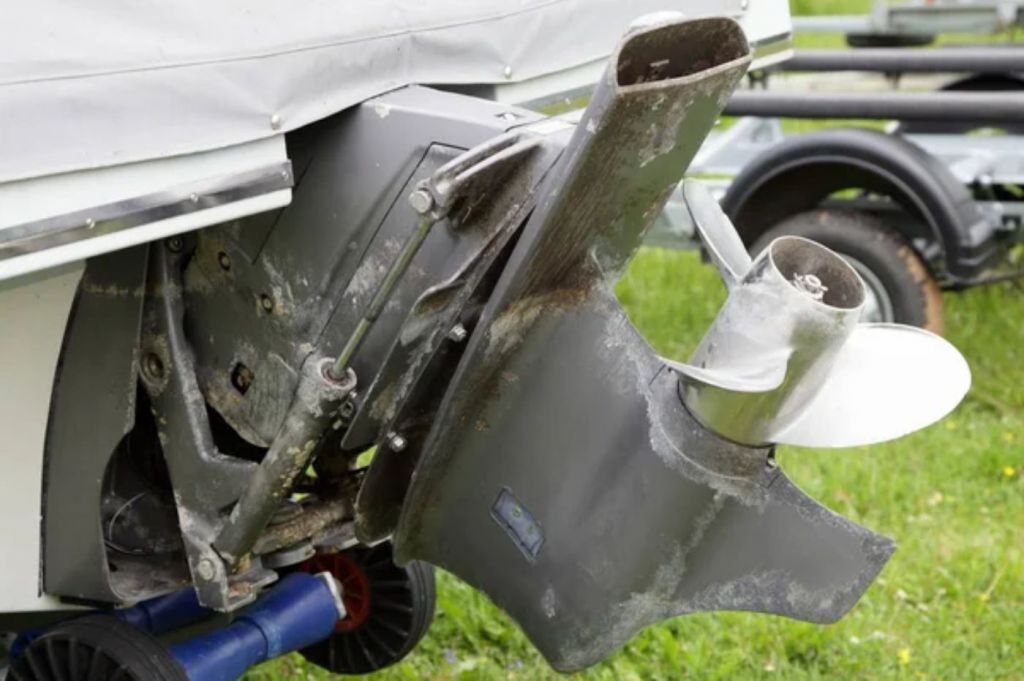
On this page:
Winterizing an Inboard Outboard Boat in 2-4 Hours
The table below shows the steps in fully winterizing an inboard outboard boat and the estimated time required to finish each step:
| Steps for Winterizing an Inboard Outboard Boat | Time Required |
|---|---|
| Preparing for winterization | 30 minutes |
| Engine and fuel system winterization | 1 hour |
| Electronics and battery winterization | 30 minutes |
| Propeller and gearcase winterization | 30 minutes |
| Hull and trailer winterization | 30 minutes |
| Total time required | 2-4 hours |
Winterizing your inboard/outboard boat involves taking steps to protect your boat's engine and other systems from the harsh winter weather conditions, to avoid major damage and the need to replace them.
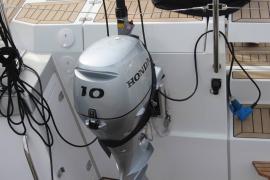
The Cost of a Boat Engine Replacement
One of the main reasons for winterizing your boat is to prevent water from freezing inside the engine block. When water freezes, it expands, which can cause damage to the engine block and other parts of the engine. This can lead to expensive repairs or even the need to replace the engine entirely.
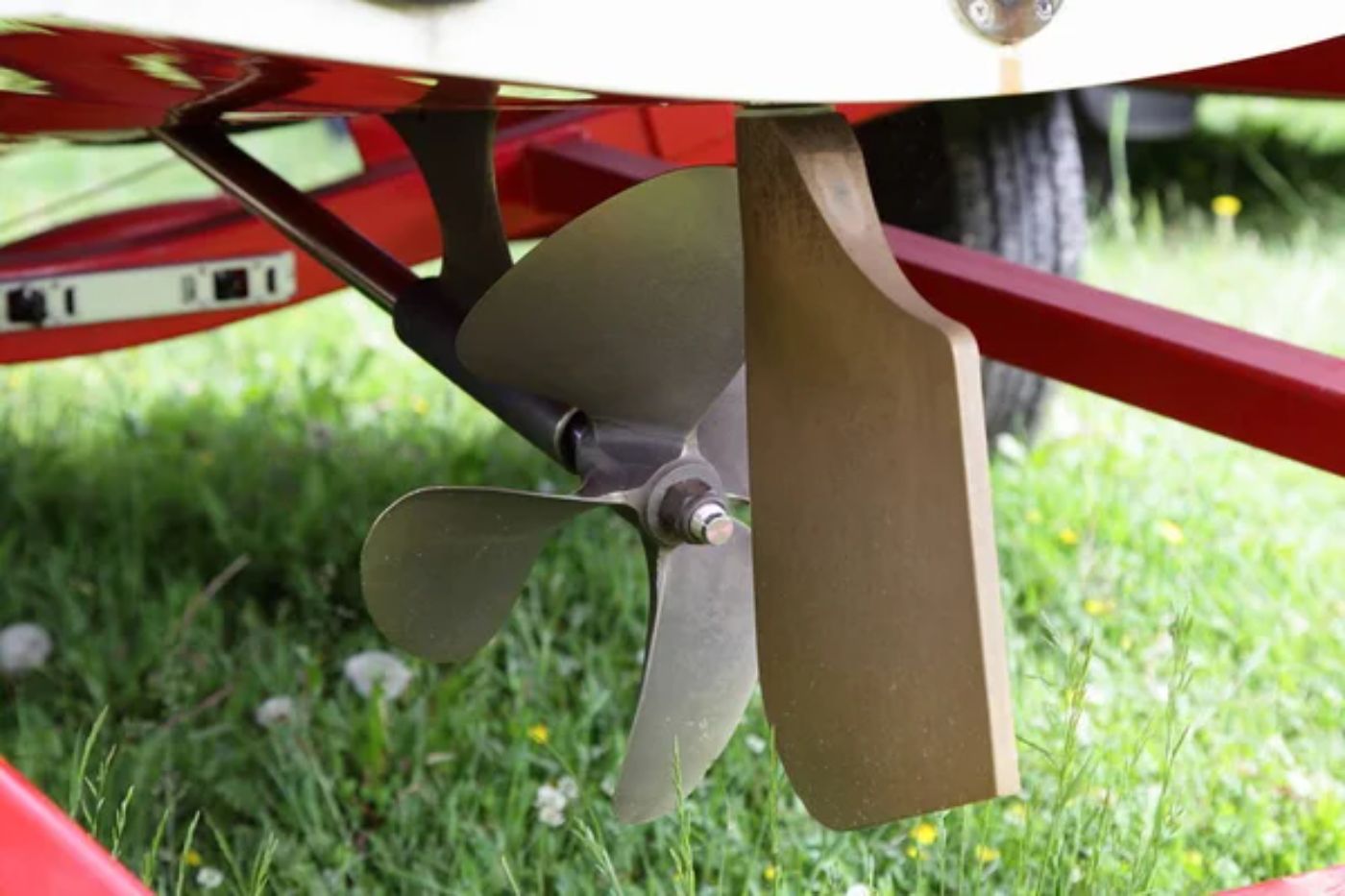
While the basic principles of winterizing a boat are similar across different types of vessels, inboard outboard boats require some specific steps to ensure their engines and stern drive units are properly protected during the winter months.
Below are a few reasons why inboard outboard boat engines require a different approach to winterization:
-
Inboard outboard boats have engines that are partially submerged in water, which means they require specific attention during winterization. Other types of boats, such as outboard motorboats or sailboats, may have engines that are fully above the waterline, which makes winterizing them a bit simpler.
-
Inboard outboard boats have a cooling system that uses raw water from the lake or ocean to cool the engine. This means that during winterization, it's important to flush the system with antifreeze to prevent damage from freezing temperatures.
-
Inboard outboard boats have a stern drive unit that needs to be drained of water and lubricated before storage. This is an important step to prevent damage to the gears and bearings.
Preparing for Winterization
Below are some steps you can take to prepare for winterization:
Gather basic tools and materials
The table below shows a long list of tools and materials to completely winterize an inboard outboard boat with an estimated price for each:
| Item | Purpose | Estimated Price |
|---|---|---|
| Oil and filter | Change the engine oil and filter to prevent corrosion | $30 - $50 |
| Fuel stabilizer | Prevent fuel from breaking down and clogging the engine | $10 - $20 |
| Fogging oil | Protect the engine from rust during storage | $10 - $20 |
| Marine grease | Lubricate moving parts to prevent rust and corrosion | $10 - $20 |
| Gear lube | Change the gear oil to prevent corrosion and wear | $20 - $30 |
| Garden hose | Flush the engine with fresh water to remove salt and debris | $20 - $30 |
| Lower unit oil pump | Pump new gear oil into the lower unit for lubrication | $20 - $30 |
| Prop wrench | Remove the propeller for inspection and maintenance | $10 - $20 |
| Marine fuel stabilizer | Prevent ethanol damage to the fuel system | $10 - $20 |
| Ethanol-free fuel | Use for winterization to prevent ethanol damage | $50 - $100 |
| Automotive oil | Use for fogging the engine to prevent rust | $20 - $30 |
| Anti-seize lubricant | Prevent corrosion on metal parts and fittings | $10 - $20 |
| Propeller shaft seal | Inspect and replace if necessary to prevent water leaks | $20 - $30 |
Read the owner's manual
The owner's manual will provide you with specific instructions on how to winterize your boat, including recommended procedures and materials. It may also contain information on maintenance schedules, troubleshooting tips, and safety guidelines.
You will need to read the manual thoroughly and follow the instructions carefully to ensure that your boat is properly winterized and ready for storage. If you have misplaced your owner's manual, you may be able to find a digital version online or contact the manufacturer to request a replacement.
Engine and Fuel System Winterization
Here are some steps you can take to properly winterize your boat's engine and fuel system:
Change the oil and filters
Old oil can become acidic and can cause damage to your engine during storage. Changing the oil and filters will help protect your engine and keep it running smoothly when you're ready to use your boat again.
Add a fuel stabilizer
To prevent the fuel in your boat's tank from breaking down and causing problems during storage, add a fuel stabilizer to your fuel system. This will help keep the fuel fresh and prevent it from clogging your fuel system. Try to run the engine for a few minutes after adding the stabilizer to ensure it is distributed throughout the fuel system.
Drain the fuel system
If you're storing your boat for an extended period, it's a good idea to drain the fuel system completely. This will prevent the fuel from breaking down and causing problems during storage. To do this, simply run the engine until it runs out of fuel, or use a fuel pump to remove the fuel from the tank.
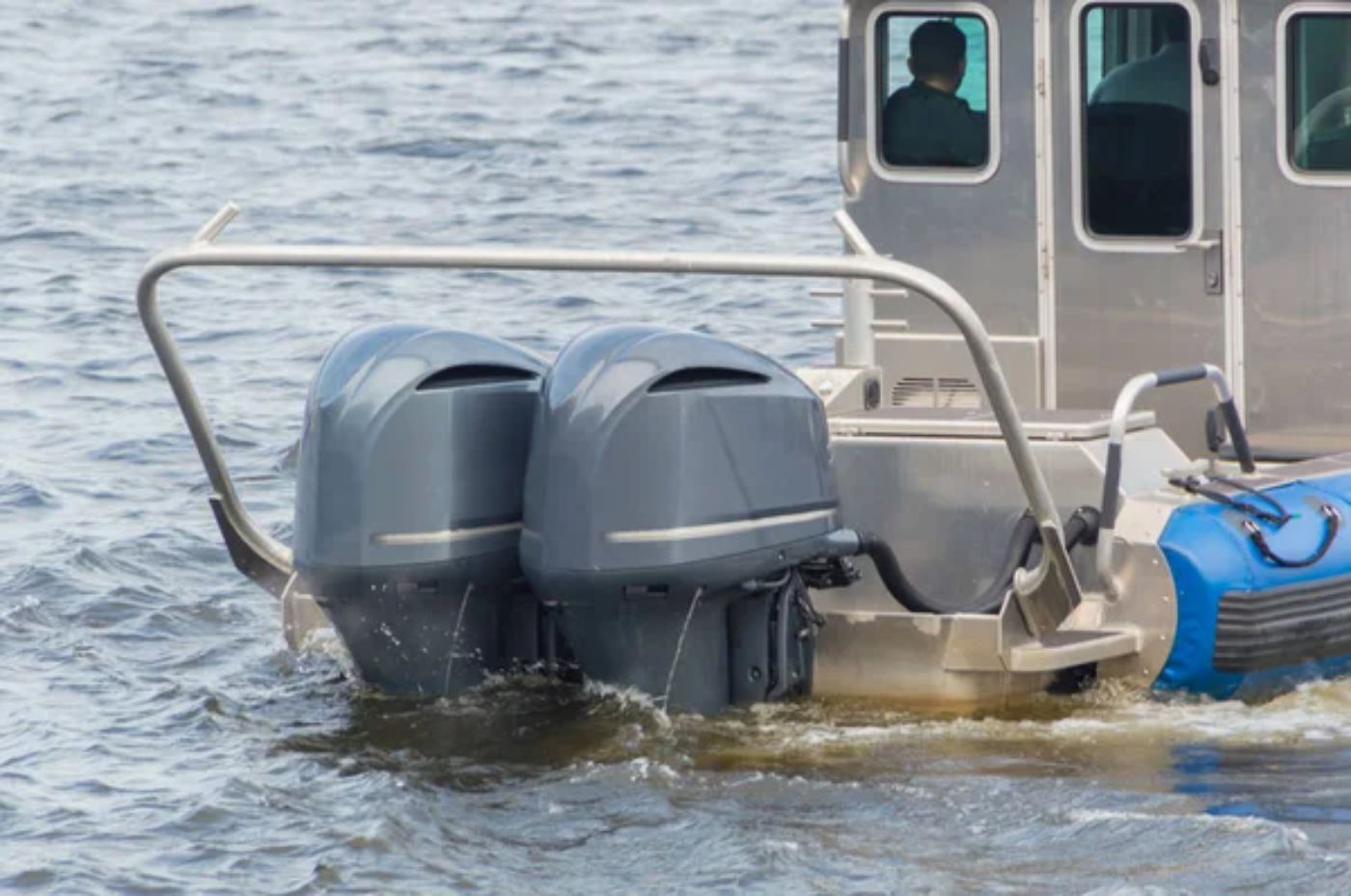
Add antifreeze
Use an antifreeze that is specifically designed for marine engines. You can follow the manufacturer's instructions for adding the antifreeze to your engine.
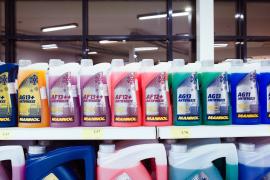
Antifreeze to Winterize Your Boat: What & How Much
Check the spark plugs
Before storing your boat, it's a good idea to check the spark plugs. If they are dirty or worn, replace them. This will help ensure that your engine starts smoothly when you're ready to use your boat again.
Protect the carburetor
To protect the carburetor from corrosion during storage, spray it with a carburetor cleaner and then coat it with a light layer of oil. This will help prevent rust and corrosion from forming on the carburetor.
Check the power trim fluid
Check the power trim fluid in your boat's engine and top it off if necessary. This will help ensure that the power trim system operates smoothly when you're ready to use your boat again.
Store your boat with a full tank of gasoline
When storing your boat for the winter, it's a good idea to fill the gas tank completely. This will help prevent moisture from accumulating inside the tank and causing problems during storage.
Check the oil level
If the oil level in your engine is low, add oil to bring it up to the proper level. This will help protect your engine during storage.
Electronics and Battery Winterization
Below are a few steps you can take to ensure that your electronics and batteries are properly winterized:
Remove batteries
If you're storing your boat for the off-season, it's a good idea to remove your batteries and store them in a dry, cool place. Batteries are susceptible to damage when exposed to freezing temperatures, which can cause the electrolyte solution inside to freeze and expand, potentially damaging the battery's casing or causing it to leak.
To prevent this from happening, it's recommended that you remove the batteries from your boat and store them in a dry, cool place, such as a garage or basement.
Charge batteries
Charging your boat's batteries before storing them for an extended period protects them and ensures that they're ready to use when you take your boat out of storage.
When batteries are left in a discharged state for an extended period, they can develop sulfation, which is a buildup of lead sulfate crystals on the battery plates. This buildup can reduce the battery's capacity and performance, and can even lead to permanent damage.
To prevent sulfation from occurring, it's recommended that you fully charge your boat's batteries before storing them. This will help to keep the battery plates clean and prevent the buildup of lead sulfate crystals.
Take note that lead-acid batteries should be charged at a lower voltage than lithium-ion batteries. Always refer to your battery manufacturer's recommendations for charging and storing your specific type of battery.
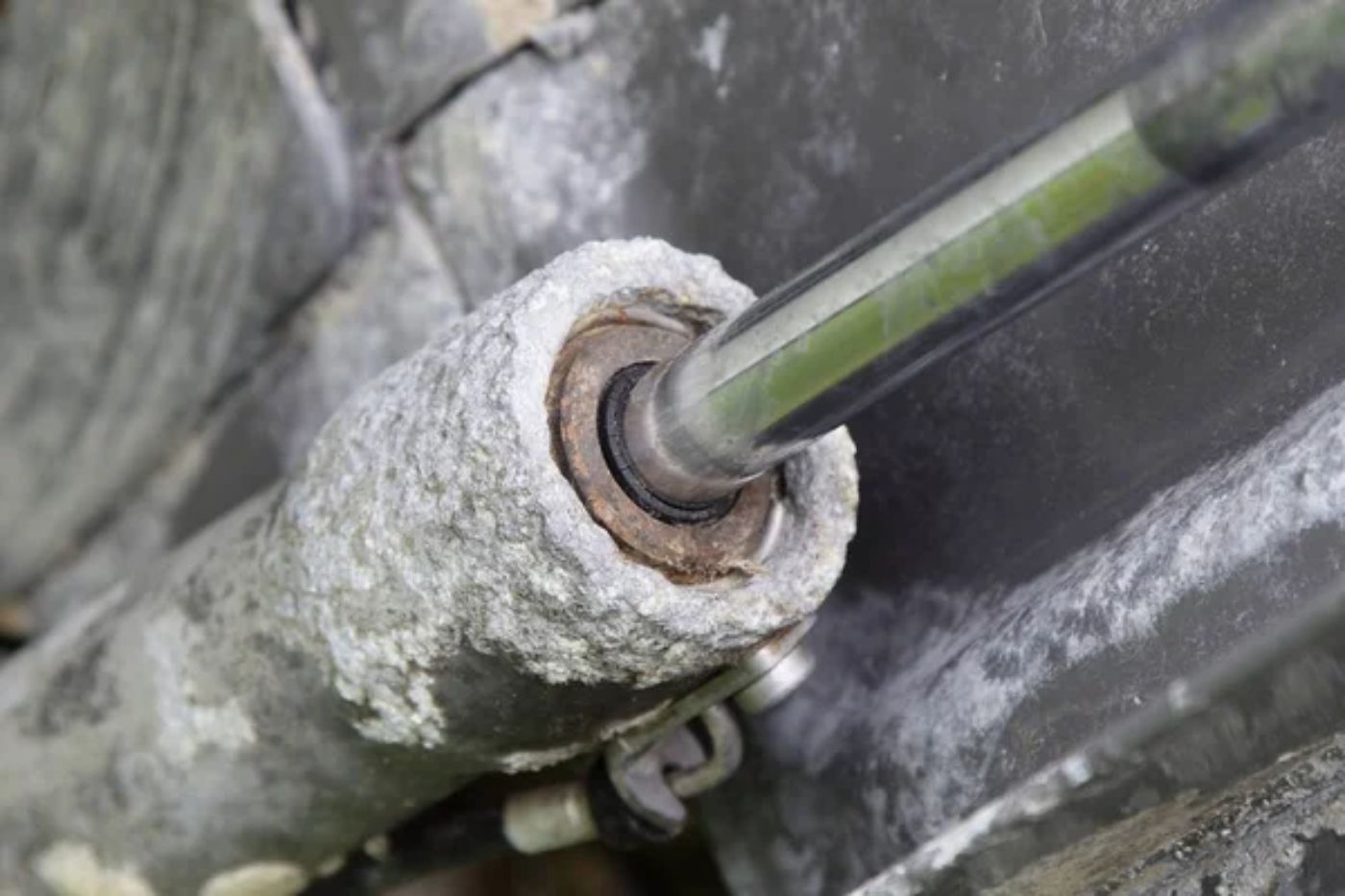
Disconnect electronics
If you have any electronics on board, such as a GPS or fish finder, you need to disconnect them before winterizing your boat. Electronics on board your boat can be susceptible to damage from power surges or other electrical issues, especially during the winter months when your boat is not in use.
To disconnect the electronics, you should first turn off all power to the boat. Then, disconnect the electronics from the boat's electrical system by removing the wires or unplugging the cables. It's also a good idea to label the wires or cables to make it easier to reconnect them when you're ready to use your boat again.
Cover electronics
If you're storing your boat outside, it's a good idea to cover your electronics with a waterproof cover. This will help protect them from moisture and other elements.
Install new electronics
If you're planning on upgrading your electronics, the off-season is a great time to do it. This will give you plenty of time to install and test your new equipment before the boating season starts.
Propeller and Gearcase Winterization
Here are the steps you need to follow to winterize your propeller and gearcase:
-
Remove the propeller from the propeller shaft. Inspect the propeller for any signs of damage, such as cracks, dents, or bent blades. If you notice any damage, replace the propeller before reinstalling it.
-
Apply marine grease to the propeller shaft and propeller shaft seal. This will help prevent corrosion and keep the seal lubricated.
-
Drain the gearcase oil. Remove the drain plug from the gearcase and let all the oil drain out. Inspect the oil for any signs of metal shavings or water. If you notice any, it could be a sign of a more serious problem and you should have your boat inspected by a professional.
-
Refill the gearcase with fresh gear lube. Use the recommended gear lube for your specific engine and fill the gearcase up to the recommended level.
-
Reinstall the propeller onto the propeller shaft. Make sure to tighten the propeller nut to the manufacturer's specifications.
Hull and Trailer Winterization
How to winterize the hull
Clean the hull
Before storing your boat for the winter, give the hull a thorough cleaning. Use a boat soap and a soft-bristled brush to remove any dirt, grime, or salt buildup. Rinse the hull with fresh water and allow it to dry completely before moving on to the next steps.
Check for damage
Inspect the hull for any signs of damage, such as cracks or chips. If you find any damage, make sure to repair it before storing your boat for the winter.
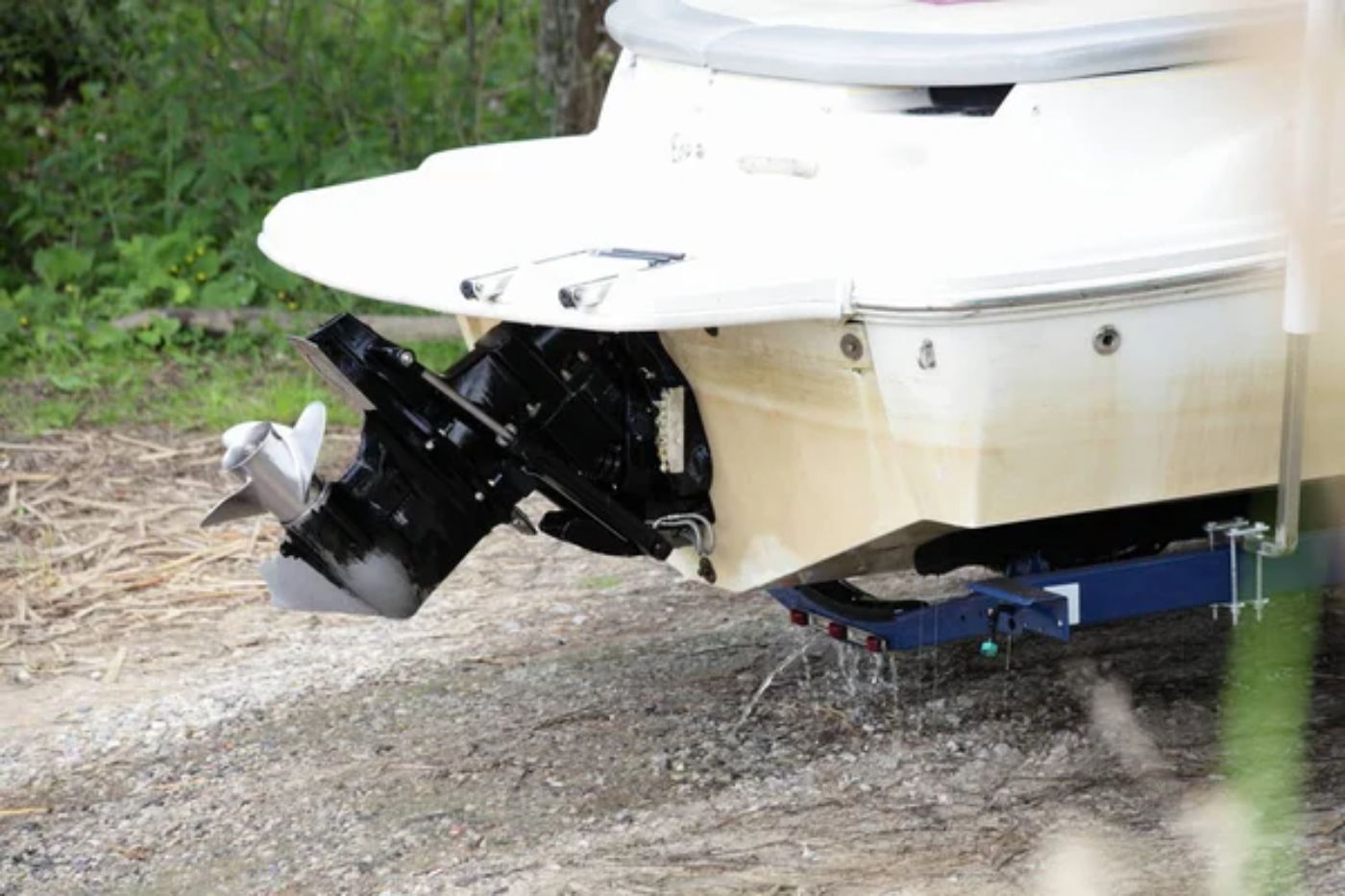
Apply wax
Applying a coat of wax to the hull can help protect it from the elements during the winter months. Use a high-quality marine wax and apply it according to the manufacturer's instructions.
Install sacrificial anodes
Sacrificial anodes are designed to corrode instead of the metal parts of your boat. Make sure to install new anodes before storing your boat for the winter.
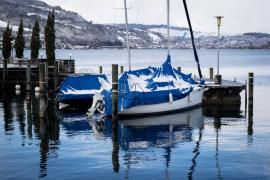
9 Tips for Winterizing a Boat that Stays in the Water
Cover the boat
Finally, cover your boat with a high-quality boat cover to protect it from the elements.
How to winterize the trailer
Clean the trailer
Just like the hull, clean the trailer before storing it for the winter. Use a mild detergent and a soft-bristled brush to remove any dirt or grime. Rinse the trailer with fresh water and allow it to dry completely.
Check the tires
Make sure to check the tires for proper inflation and any signs of damage. If the tires are in poor condition, consider replacing them before storing your trailer for the winter.
Lubricate moving parts
Lubricate any moving parts on your trailer, such as the hitch or winch, to prevent rust and corrosion.
Shrink wrap the trailer
Consider shrink-wrapping your trailer to protect it from the elements during the winter months. You can see a more detailed discussion of the pros and cons of using a shrink wrap in this article.
How to Winterize a Sterndrive Boat
Here are some steps to follow to properly winterize your own sterndrive boat:
-
Fill up the gas tank and add a fuel stabilizer recommended by your owner's manual, such as Star Brite EZ-To-Start. It's a good idea to keep the tank full to reduce the amount of air in the tank.
-
Change the engine oil and filter. This will help prevent corrosion and ensure that the engine is properly lubricated when you start it up next season.
-
Drain the engine block and manifolds of all water. You can do this by removing the drain plugs and flushing the system with a non-toxic antifreeze solution.
-
Remove the drive and inspect the bellows, universal joint, gimbal bearing, shift cable bellows, water intake hose, and exhaust run. Replace any parts that are worn or damaged.
-
Lubricate the propeller shaft splines and check the prop shaft for the fishing line. Lubricate the engine coupler.
-
Replace the water-separating fuel filter. If your engine has a freshwater cooling system, check the coolant fluid level and concentration for freeze protection.
-
Disconnect the battery and store it in a cool, dry place. You can also use a battery tender to keep it charged over the winter.
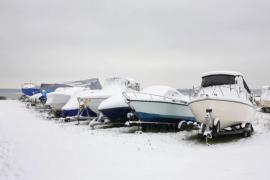
Do You Need To Winterize Your Boat? — It Depends
The Best Stern Drive Winter Cover
The table below shows different stern drive winter covers and their pros and cons:
| Stern Drive Winter Cover Suggestions | Pros | Cons | Estimated Cost |
|---|---|---|---|
| Taylor Made Products 45602 BoatGuard Eclipse Trailerable Boat Cover | - Fits a variety of boat sizes - Unique venting system prevents mold and mildew |
- Higher cost compared to DIY option - May not fit all boat models |
$150 - $500 |
| MSC Heavy Duty 600D Marine Grade Polyester Canvas Trailerable Waterproof Boat Cover | - Waterproof and UV-resistant - Reinforced seams and drawstring hem for secure fit |
- May not fit all boat models - Higher cost compared to DIY option |
$100 - $400 |
| DIY Stern Drive Winter Cover | - Customizable to fit any boat size - Lower cost compared to pre-made options |
- May not be as durable as pre-made options - Requires some DIY skills to create |
$50 - $100 |
Once you have completed all the necessary steps to winterize your inboard outboard boat, it's time to protect your stern drive from the harsh winter elements.
A stern drive winter cover will help protect your stern drive from snow, ice, and other debris that could damage it during the winter months.
There are several types of stern drive winter covers available on the market. Some are designed to be custom fit to your specific boat model, while others are universal and can fit a range of boat sizes. When choosing a stern drive winter cover, one must consider the material, fit, and durability.
One popular option is the Taylor Made Products 45602 BoatGuard Eclipse Trailerable Boat Cover. This cover is made from 100% marine-grade polyester and is designed to fit a variety of boat sizes. It also features a unique venting system that allows air to circulate, preventing mold and mildew from forming.
Another option is the MSC Heavy Duty 600D Marine Grade Polyester Canvas Trailerable Waterproof Boat Cover. This cover is made from a heavy-duty marine-grade polyester canvas that is both waterproof and UV-resistant. It also features reinforced seams and a drawstring hem for a secure fit.
If you're looking for a DIY option, you can make your own stern drive winter cover using a few simple materials. You'll need a heavy-duty tarp, bungee cords, and duct tape. Simply wrap the tarp around your stern drive and use the bungee cords to secure it in place. Use duct tape to reinforce any areas that may be prone to tearing.
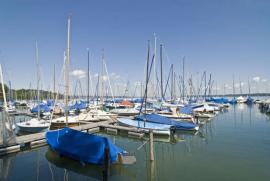
How To Make an Affordable DIY Winter Boat Cover
Did you find the answer to your specific question?
👍 0 👎 0


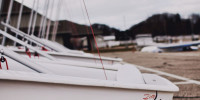
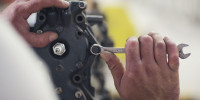
Leave a comment